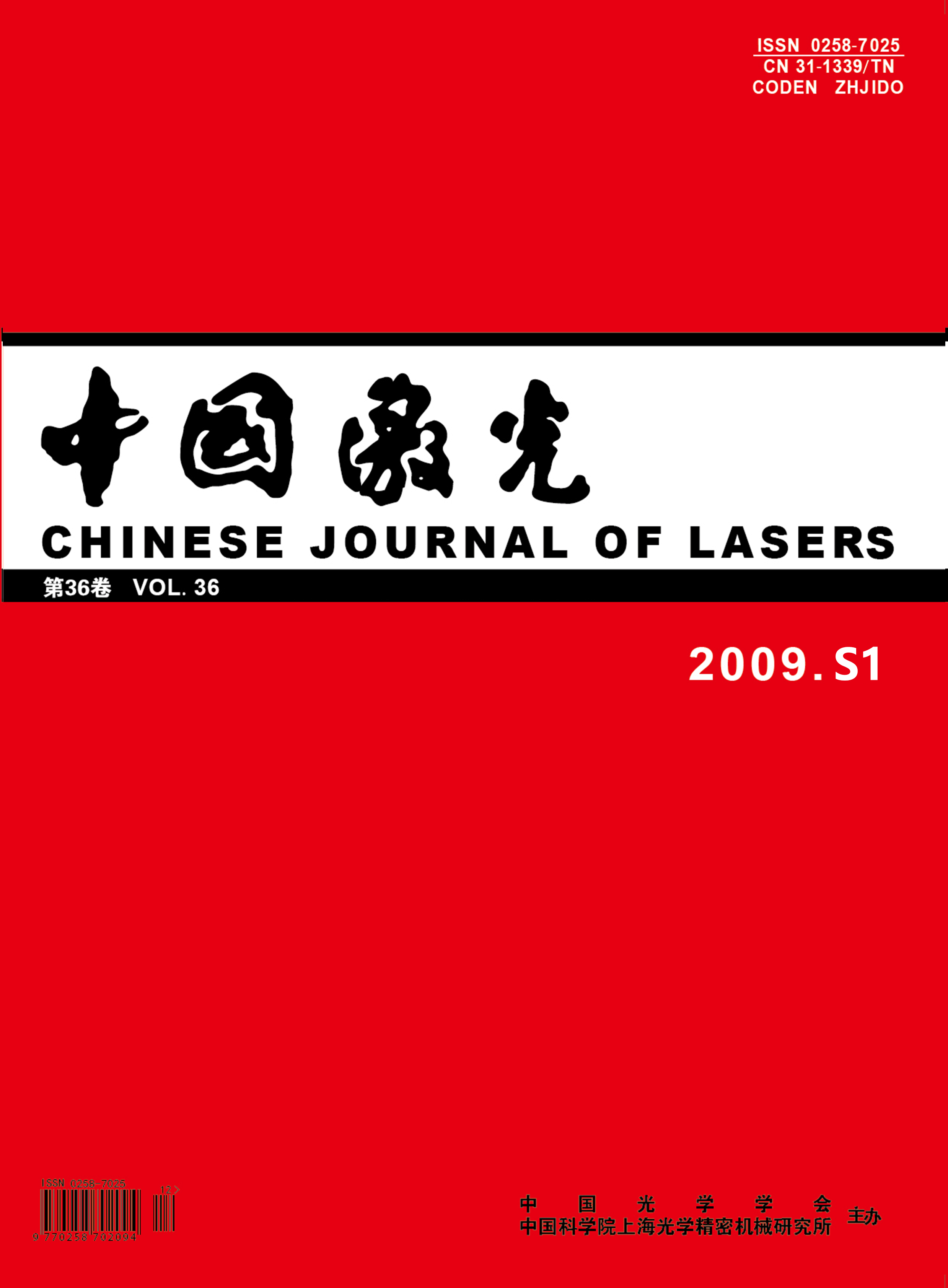中国激光, 2009, 36 (s1): 66, 网络出版: 2009-06-18
利用微结构光纤对皮秒脉冲进行波长转换
Analysis of Wavelength Conversion of Picosecond Pulses Based on Four-Wave Mixing in Microstructure Fibers
摘要
对微结构光纤中基于四波混频(FWM)效应的全光波长变换进行了实验研究。利用长度为80 m的色散平坦高非线性微结构光纤实现了对重复频率为10 GHz,宽度为1.6 ps的脉冲序列的波长变换, 波长上转换和波长下转换均能在实验观中察到。另外, 对于脉冲光和连续光的光功率对转换效率的影响也进行了实验研究, 当功率相对比较高时, 无论是波长上转换还是波长下转换, 转换效率都比较高, 并且随着输入微结构光纤的光功率的降低, 转换效率相应减小; 波长下转换受到脉冲光功率的影响比较明显。
Abstract
All optical wavelength conversion based on four-wave mixing (FWM) is experimentally demonstrated in 80-m dispersion-flatted high nonlinear microstructure fibers (MF). The pulsed signal with 10 GHz repetition rate and 1.6 ps pulse width is used as pump wave. In the experiments, both down- and up-conversion are obtained in this type of wavelength converter. Moreover, the relationship between conversion efficiency and the power of CW and pulsed wave is also experimentally analyzed. Both of the wavelength up-conversion and down-conversion is efficient and this efficiency decreases as the input power falls. The power of optical pulse’s impact on the down-conversion is obvious. In summary, we believe the high nonlinear dispersion-flattened microstructural fiber will play an important roll in all optical wavelength conversion.
张霞, 李佳健, 黄永清, 任晓敏. 利用微结构光纤对皮秒脉冲进行波长转换[J]. 中国激光, 2009, 36(s1): 66. Zhang Xia, Li Jiajian, Huang Yongqing, Ren Xiaomin. Analysis of Wavelength Conversion of Picosecond Pulses Based on Four-Wave Mixing in Microstructure Fibers[J]. Chinese Journal of Lasers, 2009, 36(s1): 66.





